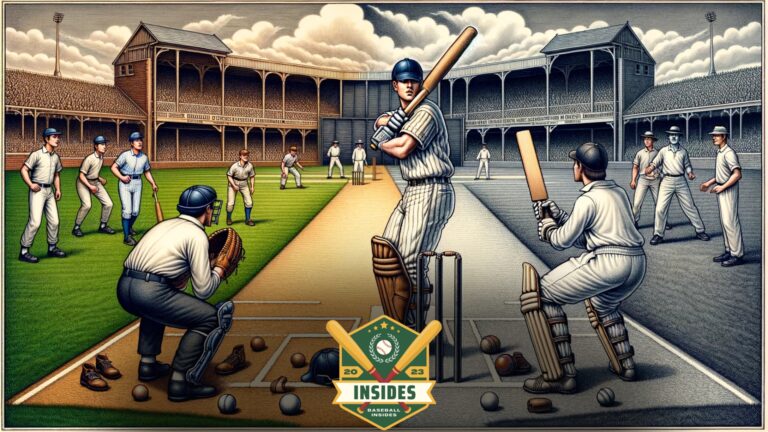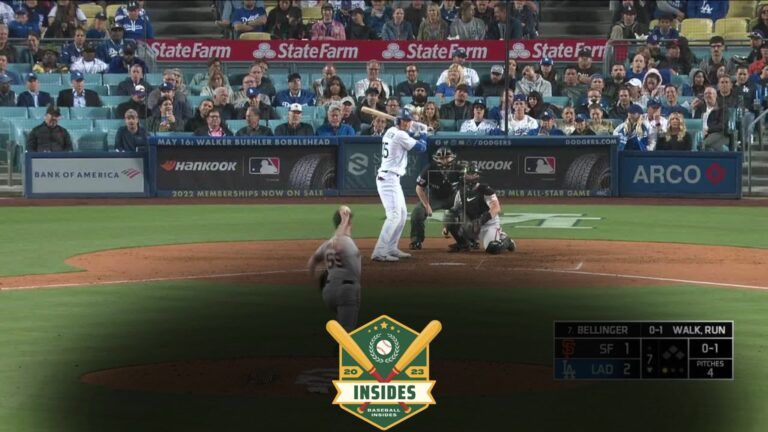
In this article:
When a baseball game goes into overtime, it enters extra innings. This occurs if the score is tied after the regulation nine innings.
Baseball, America’s pastime, thrives on excitement and suspense, especially when a game is so evenly matched that it extends beyond the usual nine innings.
Extra innings serve as baseball’s version of overtime, a tiebreaker that ensures every match has a clear winner.
Fans often stay glued to their seats or screens, anticipating the clutch plays and strategic moves that can tip the scales at any moment.
The pressure increases as players pull out all the stops to outscore their opponents, making extra innings a showcase of the sport’s most thrilling and intense moments.
This system keeps the game fair and competitive, highlighting the importance of endurance and resilience within the sport.
Understanding extra innings is crucial for any baseball enthusiast looking to fully grasp the game’s rules and the unyielding drive of teams battling for victory.
The Extra Innings Phenomenon
When a baseball game is tied at the end of the regular nine innings, it enters a phase where fans eagerly anticipate extra innings.
This is baseball’s version of overtime, a thrilling and unpredictable continuation of the game where each team battles for that decisive run.
Extra innings keep the excitement going, sometimes leading to historical play and unforgettable victories.
Breaking Down the Concept
Extra innings are played after the ninth if the game remains tied. Here’s how they work:
- Equal chances: Each team gets to bat in every extra inning.
- Continuous play: The game continues until one team has more runs at the end of an inning.
- New Rules: Recently, a runner starts on second base at the beginning of each extra inning.
This rule change speeds up the game and increases the scoring chance, making every extra inning even more edge-of-your-seat fantastic.
Comparisons to Other Sports
| Sport | Overtime Format | Extra Innings/Baseball |
|---|---|---|
| Football (Soccer) | Two 15-minute halves | Sudden victory after tied nine innings |
| Basketball | Five-minute periods | |
| Hockey | Five-minute three-on-three | |
| Football (American) | 15-minute sudden death |
Unlike these sports, baseball has no time limit for its overtime. It relies purely on skill and strategy to break the tie.
The game could end in the 10th inning or go well beyond, leading to some of the longest and most memorable games in sports history.
Setting the Stage for Overtime
Think of the ninth inning as the grand finale, the crescendo of anticipation that one experiences at the climax of a thrilling show.
When both teams are deadlocked, neither willing to budge, the spectacle of baseball shifts into a unique phase: overtime, or as the pros call it, extra innings.
The entire game that led to this moment is a chess match of strategy and skill, culminating in an electrifying standoff where every pitch, every swing, and every play holds the potential to tip the scales of victory.
The Road to a Tied Game
A tied game is like a gripping story where the ending is yet to be written. The journey to this juncture isn’t straight; it has unexpected turns and dramatic moments.
Both teams lay the groundwork in the initial innings – hitters adjust their swing, and pitchers find their rhythm.
As the game progresses, the scoreboard reflects a narrative of lead changes, clutch hits, and strategic plays that eventually lead to the all-important tie.
Intensity and Anticipation
The atmosphere, as time looms, is electric. Fans are on the edge of their seats, awaiting the outcome. Intensity fills the stadium. Every player is hyper-focused.
The dugouts are buzzing with energy. Anticipation builds as coaches deliberate over their next move.
It’s a battle of wits and patience, a test of endurance, where the slightest edge can turn an entire game. This is the moment when legends are made and heroes emerge.
Rules of Engagement
Baseball games tied at the end of the ninth inning enter what fans often call “overtime.” Here, excitement peaks as teams battle for the win. But how does this extra play work?
Let’s dive into the intricacies that make baseball’s overtime, or “extra innings,” a unique and thrilling part of the game.
Understanding MLB’s Overtime Rules
Overtime in baseball follows a distinct set of rules to decide the game’s winner. Consider these quick facts:
- Extra Innings: Overtime starts in the 10th inning.
- Sudden Victory: The first team to lead after a completed inning wins.
- Continuous Play: Play continues until a winner is determined.
- Position Players: Fielders and batters keep their roles.
- International Tiebreaker Rule: In 2020, a new rule added a runner on second at the start of each inning.
Changes Over the Years
Baseball’s overtime has evolved, adapting to the pace of the modern game. Historical changes include:
| Year | Change Implemented |
|---|---|
| 2020 | The new tiebreaker rule introduced a runner on second. |
| 2019 | The All-Star Game used tiebreaker rules for the first time. |
| 1970’s | DH rule affected strategy in extra innings. |
These changes ensure the game stays fresh and exciting for fans worldwide. As baseball progresses, adjustments to the rules are necessary to keep the sport competitive and engaging.
From the introduction of the designated hitter to the latest tiebreaker addition, these alterations impact strategy and outcomes.
Strategy and Stamina in Extra Innings
Extra innings in baseball unleash the suspense of a game tied at the end of regulation play.
Here, strategy and stamina take center stage as teams battle for victory. Let’s delve into how managers and players handle this high-pressure situation.
Managerial Tactics
Team managers make crucial decisions during extra innings that can make or break the game. A well-thought-out strategy is a game-changer. Managers typically consider:
- Pitcher management: Deciding whether to keep a pitcher in the game or bring in a reliever from the bullpen.
- Defensive shifts: Adjusting fielder positions based on hitter tendencies.
- Pinch hitters and runners: Using specialized players increases the scoring chance.
Player Endurance and Focus
Players must display high endurance levels and maintain their focus in extra innings. Key aspects include:
| Aspect | Importance |
|---|---|
| Physical stamina | Maintaining peak performance through additional innings |
| Mental focus | Keeping a clear head for strategic plays and decision-making |
Players train for these moments, knowing their resilience can lead the team to win when it counts the most.
Iconic Overtime Battles in History
Imagine the sound of the crowd as the ninth inning ends in a tie. That’s when baseball enters the thrilling waters of overtime.
Over the years, the sport has seen some truly unforgettable overtime battles. These matches have delighted fans and left an indelible mark on the sport’s history.
Let’s take a closer look at these iconic showdowns and their electrifying moments.
Game-changing Moments
Baseball’s overtime, commonly known as extra innings, can turn players into legends. Moments such as Bill Mazeroski’s World Series walk-off home run in 1960 and David Freese’s heroics for the Cardinals in the 2011 World Series are in history.
These are not just plays; they are pure spectacles. They remain etched in the memories of fans for generations to come:
- Chris Burke’s 18th-inning home run for the Astros in 2005.
- Kirk Gibson’s iconic 1988 World Series pinch-hit homer.
- The Red Sox and Dodgers’ 18-inning marathon in the 2018 World Series.
Impact on the Sport’s Legacy
Overtime battles don’t just end with the final score; they ripple through time to shape baseball. Every extra inning adds a new chapter to the legacy.
It highlights the spirit of perseverance that defines the game. Consider how these historical overtime moments influenced baseball:
| Year | Event | Impact |
|---|---|---|
| 1960 | Mazeroski’s Walk-off | Inspired underdogs |
| 1986 | Game 6, Mets vs. Red Sox | Highlighted the curse of the Bambino |
| 2011 | Freese’s Triple and Homer | Redefining clutch performances |
Each extra inning can redefine a player’s career and the game’s history. Battles like these show the relentless pursuit of victory and the unforgettable drama that only baseball can provide.
The Aftermath of Overtime
When baseball extends into overtime, it isn’t just about extra innings—it’s a thrilling shift where players and fans find their endurance tested.
Teams are pushed to their limits, and the game walking off with a win or a loss can alter the course dramatically.
Physical and Psychological Effects
Players often experience heightened fatigue after a long game. This weariness impacts not only their physical capabilities but also their mental sharpness.
- Muscle soreness and injury risk escalate.
- Reaction times may slow down.
- Focus can falter under prolonged pressure.
Stress levels soar for athletes as the game hangs in the balance. Continuous play without ample rest leads to exhaustion.
| Aspect | Effect |
|---|---|
| Physical Stamina | Decreases |
| Mental Focus | Weakened |
| Stress | Increased |
Effects on Team Season Performance
Overtime games can be a critical pivot for a team’s season performance.
- Winning boosts morale but drains energy.
- Losing can demoralize and intensify scrutiny.
- Every overtime bout reshapes the standings.
Teams must balance the immediate victory thrill against the season’s ongoing demands.
A successful overtime can spur a win streak but can precede a slump if the team doesn’t recover well.
Frequently Asked Questions
What Happens If Baseball Goes Into Overtime?
If a baseball game is tied after nine innings, it goes into extra innings. Teams continue to play until one out-scores the other in a complete inning.
What Happens If Tied After 9 Innings?
If tied after 9 innings in baseball, teams play extra innings until one team outscores the other after a complete inning. Extra innings continue until a winner is determined.
How Many Innings Can Baseball Go?
A baseball game typically lasts nine innings but can extend into extra innings if the score is tied. There is no set limit to the number of extra innings that can be played.
How Do MLB Extra Innings Work?
MLB extra innings start with a runner on second base. Teams continue to play complete innings until one outperforms the other in the score. This rule speeds up the conclusion of the game.
What is Baseball Overtime Called?
Baseball overtime is typically referred to as “extra innings. “
Conclusion
Baseball’s overtime, or extra innings, ensures a thrilling finish to a tied game. This phase heightens suspense as teams strive for a decisive victory.
As fans savor these nail-biting showdowns, the sport’s unscripted drama cements its place in hearts worldwide.
Embrace the extra innings; they embody baseball’s unpredictable spirit.






